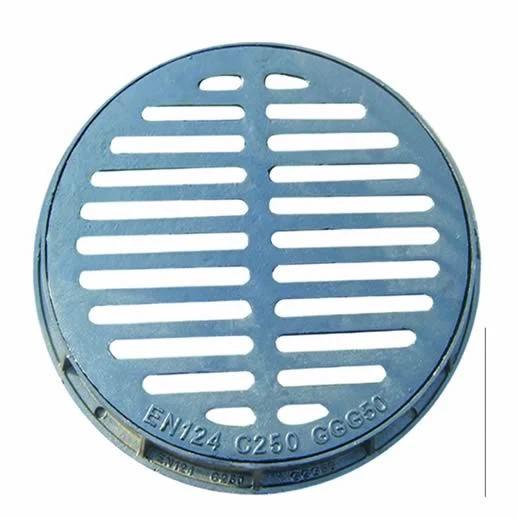rectangular manhole cover
The Design and Functionality of Rectangular Manhole Covers
Manholes are ubiquitous in urban environments, playing a pivotal role in maintaining essential underground utilities such as sewage systems, water lines, and telecommunications infrastructure. Among the various designs of manhole covers, rectangular manhole covers are particularly noteworthy. Their unique shape and design cater to specific needs within urban planning and infrastructure maintenance, offering advantages that circular designs cannot.
Historical Background
Traditionally, manhole covers have been circular, a design that dates back centuries. The circular shape prevents the cover from falling into the manhole, as any rotation of the cover will always keep it aligned with the opening. However, the introduction and increasing use of rectangular manhole covers began as urban areas expanded and the complexity of underground utilities grew.
The evolution towards rectangular designs stems from the need to provide access to larger openings for maintenance and repair work. Unlike circular covers, rectangular covers allow for direct access to specific infrastructure components, such as cable conduits or wide sewerage pipes. This design modification facilitates more efficient and safer maintenance operations.
Advantages of Rectangular Manhole Covers
One of the primary advantages of rectangular manhole covers is their ability to accommodate a more extensive array of underground systems. Since many utilities run parallel to each other, a rectangular opening provides direct access without needing to maneuver the cover excessively. This is particularly beneficial in urban environments where space is limited, and utilities are densely packed.
In addition, rectangular covers can be manufactured from various materials, including cast iron, composite materials, and concrete. Each material offers distinct benefits—while cast iron is durable and can withstand heavy vehicular traffic, composite materials are lighter and resistant to rust and corrosion, providing longevity in various environmental conditions.
Furthermore, the design of rectangular manhole covers can enhance safety. The covers can be fitted with advanced locking mechanisms, preventing unauthorized access and reducing the risk of accidents caused by loose or improperly placed covers. Moreover, some innovative designs now incorporate reflective elements or colorful surfaces that improve visibility, especially in poorly lit areas.
rectangular manhole cover

Urban Aesthetics and Customization
As cities evolve, the aesthetics of urban infrastructure become increasingly significant. Rectangular manhole covers offer an excellent opportunity for customization. Local governments can collaborate with artists and designers to incorporate city logos, historical designs, or thematic elements that reflect the character of the neighborhood. This creativity not only enhances the visual appeal but also fosters a sense of community pride and ownership.
Moreover, these covers can be designed for specific functions beyond accessibility. For instance, covers are being developed with integrated drainage properties, allowing rainwater to flow into the manhole without overwhelming the surface. This innovation is particularly pertinent in combating urban flooding, as cities face increased rainfall due to climate change.
Challenges and Considerations
While rectangular manhole covers present several benefits, there are challenges to consider. Engineers must ensure that the design accommodates load-bearing requirements, especially in heavy traffic areas. The shape and size must meet specific standards to avoid damage and ensure public safety. Additionally, the cost of manufacturing and installation can be higher compared to traditional circular designs, although the benefits may justify the investment.
Maintaining these covers is also crucial. Regular inspections and maintenance can prevent safety hazards and infrastructure failures. Implementing a preventive maintenance schedule can help address issues before they escalate into larger problems, preserving both the integrity of the infrastructure and public safety.
Conclusion
In conclusion, rectangular manhole covers represent an innovative evolution in urban infrastructure design. Their unique shape meets the demands of modern cities, providing efficient access to underground utilities while enhancing safety and aesthetic appeal. As urban areas continue to grow and evolve, the need for adaptable and functional infrastructure solutions will remain paramount. Rectangular manhole covers are more than just functional elements; they are vital components that reflect the evolving nature of urban development, highlighting the intersection of engineering and design in creating safer, more efficient cities.
-
The Smarter Choice for Pedestrian AreasNewsJun.30,2025
-
The Gold Standard in Round Drain CoversNewsJun.30,2025
-
The Gold Standard in Manhole Cover SystemsNewsJun.30,2025
-
Superior Drainage Solutions with Premium Gully GratesNewsJun.30,2025
-
Superior Drainage Solutions for Global InfrastructureNewsJun.30,2025
-
Square Manhole Solutions for Modern InfrastructureNewsJun.30,2025
-
Premium Manhole Covers for Modern InfrastructureNewsJun.30,2025
